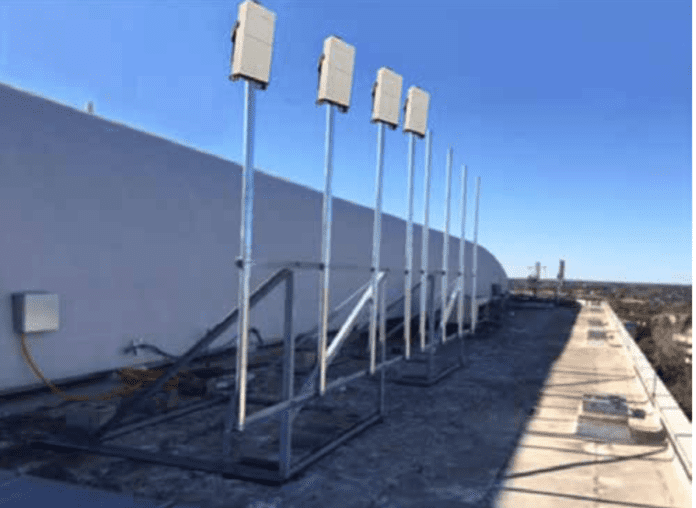Waco, Kalamazoo and South Bend will host new round of 5G fixed wireless access trials
Building on initial enterprise and consumer trials in Austin, Texas, AT&T is now expanding its research around 5G fixed wireless access to Waco, Texas, Kalamazoo, Mich., and South Bend, Ind. The carrier said key learnings from the Austin tests, including characteristics of millimeter wave propagation, will inform the new testing as well as AT&T’s contributions to the 5G standardization work being conducted by the 3GPP.
In the new markets, AT&T will expand the number of end-users and the physical size of the trial networks; participants include universities, hospitals, churches, restaurants and other small business. In addition to broadband service, AT&T is also delivering DirecTV now over the pre-standard 5G radio link.
“In Austin, we see all types of weather and substantial foliage,” Marachel Knight, senior vice president of Wireless Network Architecture and Design said in a statement. “Taking our fixed wireless 5G trials out of the lab and into the real world helps us learn important factors about millimeter wave and 5G. And in doing so, we’re learning how to better design our network for the future.”
The first wave of Austin testing involved establishing a 5G fixed wireless access link to an Intel office where typical enterprise use cases were tested. The second wave of testing covered multiple-dwelling units as well as small businesses including a car wash.
Arbor Car Wash & Lube Center owner Dave Swenson said, “Think about it–everyone’s on their phones in the waiting room. Now, our customers can pass the time with entertainment on the latest internet connection.”
The Austin trial uses Ericsson’s 5G RAN and Intel’s 5G Mobile Trial Platform. “What we’ve been looking at there,” AT&T Labs AVP of Radio Technology and Strategy Dave Wolter said, “is adding additional base stations, antennas, as well as additional customers. We started out with small business users and here we’re putting the device in the customer’s premise behind a window pointing out to- wards our base stations.” In addition to “generally putting the technology through its paces,” Wolter said the operator is studying millimeter wave propagation characteristics in both line-of-sight and non-line- of-sight conditions. “As to the number of devices that can be served,” he continued, “that’s going to depend on the ability of the software. What is gets down to eventually is what does the traffic load look like, what is the demand? When you talk about capacity, you have to start getting into those questions and simulate the system, including all the scheduling behavior to see what that all looks like. That one is a little tough to answer as we’re a little early in the day.”
For more on the AT&T testing in Austin, a look what Verizon is doing in the space and a deep-dive on 5G fixed wireless access in general, download this report.

